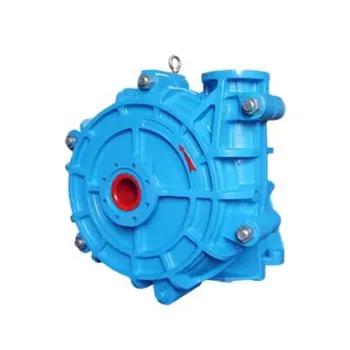Jul. 26, 2023
Mechanical Parts & Fabrication Services
Choosing a suitable slurry pump is a critical decision that can significantly impact the efficiency and effectiveness of various industrial processes. Several factors need to be carefully considered to ensure the right pump is selected for the specific application. In this article, we will explore the key factors that should be taken into account when choosing a suitable slurry pump.

Understanding the composition of the slurry is essential in pump selection. Factors such as the size and concentration of solid particles, abrasiveness, and corrosiveness of the slurry will influence the type of pump and materials it should be constructed from.
The size of solid particles in the slurry determines the pump's ability to handle and pass them without clogging. Choosing a pump with an appropriate impeller and clearance between the impeller and the casing is crucial for efficient handling of the slurry's particle size.
Determine the required flow rate of the slurry, which is usually measured in cubic meters per hour (m³/h) or gallons per minute (GPM). This will help select a pump that can handle the desired flow rate effectively.
The total head refers to the combination of the static head (vertical distance the slurry must be lifted) and the frictional head (resistance to flow caused by piping and fittings). It is essential to choose a slurry pump that can generate sufficient head to overcome these factors.
Centrifugal and positive displacement pumps are two common types used for handling slurry. Centrifugal pumps are suitable for low to medium viscosity slurries with a high flow rate, while positive displacement pumps are more effective for high viscosity and abrasive slurries.
Selecting the right materials for wetted components, such as the impeller, casing, and wear plates, is crucial to ensure the pump's longevity and resistance to abrasion and corrosion caused by the slurry.
Proper seal arrangements are essential to prevent slurry leakage and maintain the pump's efficiency. Consider factors such as mechanical seals, packing seals, and seal flush plans based on the slurry characteristics.
Choose slurry pump with an appropriate motor power that can handle the required flow rate and head while considering factors like slurry density and viscosity.
Higher pump efficiency ensures better energy utilization and cost-effectiveness. Consider the pump's efficiency to minimize energy consumption during operation.
Evaluate the maintenance requirements of the pump, including ease of disassembly, accessibility to components, and availability of spare parts.
Select a pump from reputable manufacturers known for producing reliable and durable equipment, ensuring a longer service life and reduced downtime.
Consider the initial cost of the pump along with the required accessories, such as motors, base plates, and couplings.
Evaluate the TCO, which includes maintenance costs, energy consumption, and potential downtime, to determine the long-term cost-effectiveness of the chosen pump.
Ensure the pump is rated to handle the temperature and pressure conditions of the slurry application.
Consider site-specific factors such as space availability, installation requirements, and environmental regulations when selecting the pump.
Choose pumps from reputable manufacturers with a history of producing reliable equipment and providing excellent customer support.
Evaluate the manufacturer's after-sales services, including technical support, spare parts availability, and warranty coverage.
Ensure the selected pump complies with safety standards and regulations relevant to the application and location.
Consider the pump's scalability to accommodate potential future changes in process requirements.
Choose a pump that can handle a range of slurry types and applications to provide flexibility in industrial processes.
By carefully considering these factors, industrial operators can make an informed decision when selecting a suitable slurry pump that meets the specific needs of their application, ensuring optimal performance, efficiency, and reliability.
Previous: Advantages and Applications of Plate Disposable Filters
Next: What is the difference between API 608 and API 6D ball valve?
If you are interested in sending in a Guest Blogger Submission,welcome to write for us!
All Comments ( 0 )